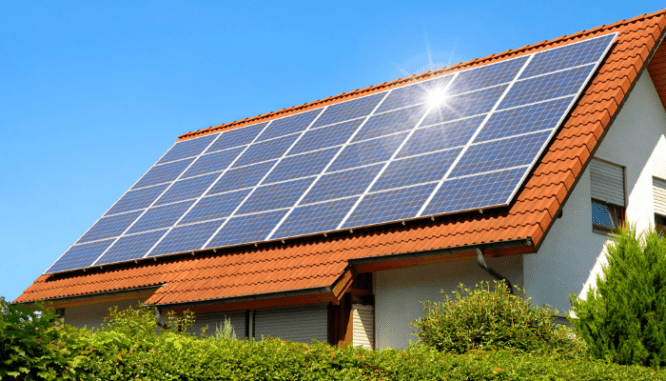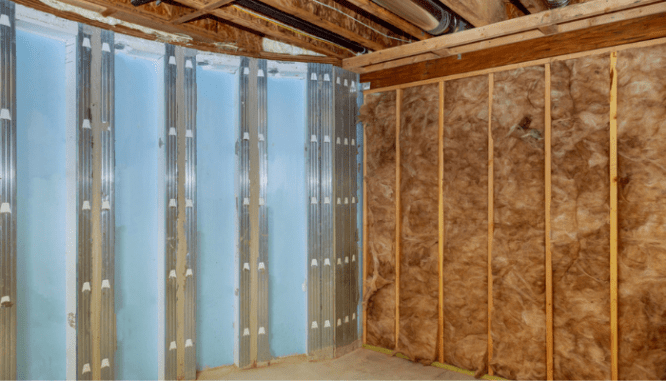9 Ways To Improve Energy Efficiency In Your Home While Adding Value
- Published on
- 8 min read
-
 Sharon Brandwein, Contributing AuthorClose
Sharon Brandwein, Contributing AuthorClose Sharon Brandwein Contributing Author
Sharon Brandwein Contributing AuthorSharon Brandwein is a writer specializing in parenting, commerce, and content marketing. Her work has also appeared on Bustle, USA Today, ABCNews, and Parents. When she’s not busy curating a wardrobe for her puppy, she's writing about motherhood and documenting her life as a writer on her blog.
-
 Presley Attardo, Contributing AuthorClose
Presley Attardo, Contributing AuthorClose Presley Attardo Contributing Author
Presley Attardo Contributing AuthorPresley is a Seattle based writer covering interior design trends, home improvement, and market updates. She has lived in San Francisco, Los Angeles, Chicago, and Washington, D.C., giving her a unique perspective on the diversity of U.S. real estate.
-
 Christopher Rogacz, Former Associate Editor, Seller Resource CenterClose
Christopher Rogacz, Former Associate Editor, Seller Resource CenterClose Christopher Rogacz Former Associate Editor, Seller Resource Center
Christopher Rogacz Former Associate Editor, Seller Resource CenterChristopher Rogacz was previously an associate editor for HomeLight's Seller Resource Center based in Washington, DC. His background is in journalism, architecture, urban policy, and housing. He holds a master's degree from the Graduate School of Design at Harvard University.
If you feel like you’re spending a small fortune on your heating and cooling bills, chances are your home is not as energy efficient as it could be. The good news is you can invest in a few upgrades that improve energy efficiency while adding value to your home.
For expert insight, we spoke with top real estate agent Justin Willard who works with 87% more single-family homes than the average agent in Pembroke Pines, Florida. Focusing on these eight home upgrades will lower your energy bills today and increase your home sale earnings tomorrow.
1. Upgrade to double-pane windows
While most homeowners don’t replace windows unless they absolutely have to, new windows can spruce up the look of your home and improve energy efficiency. Energy Star rated windows help maintain a consistent temperature inside your home year-round, but perhaps most importantly, they can help reduce your energy bills by as much as 15%. And when it’s time to sell, window upgrades are a fantastic selling point with buyers. According to a 2021 survey conducted by the National Association of Home Builders (NAHB), buyers overwhelmingly cite Energy Star rated windows as an essential feature.
Moreover, window replacements are one of the most popular home improvement projects that increase your home’s value. HomeLight’s Top Agent Insights Report shows that while window replacements can cost somewhere in the ballpark of $12,000, homeowners are likely to add around $9,672 to their resale value. That’s a whopping 81% of costs recouped.
2. Add spray-foam insulation to the attic
While the amount of heat loss through the attic tends to vary from house to house, heat loss through the attic is somewhere around 25% for most houses. To curb that heat loss and save yourself some money, consider adding some insulation.
Willard shares that adding more insulation to the attic is “one of the easiest things homeowners can do to improve the energy efficiency of their homes.” The EPA estimates that homeowners can save approximately 15% on heating and cooling costs just by insulating their attics.
Considering how effective spray foam insulation is, it’s relatively affordable, costing around $1,000 to $3,600. When it comes to resale, sellers can expect to recoup the majority of project costs, so long as they clue the buyer into the upgrade.
“It could be an attractive feature, but it’s one that you’d have to really educate them on because buyers don’t go up in the attic when they’re looking at a home. More often than not, they buy the home based on the lipstick — i.e., kitchens, bathrooms, exterior curb appeal, and floorplans,” Willard adds.
3. Replace old appliances with Energy Star models
One of the easiest things homeowners can do to improve their home’s energy efficiency is to replace all appliances with newer, more energy-efficient models. Newer appliances tend to use up to 40% less energy than models that are ten years old. If you plan to upgrade your appliances, start with the kitchen: one of the most important rooms to buyers. In our report, 75% of top agents say that stainless steel is still buyers’ favorite finish. You can purchase a kitchen appliance package at big box stores like Home Depot for as little as $2,500.

4. Add solar panels
Although they’re not technically an “energy-efficient upgrade,” homeowners can reap the rewards of solar panels in the form of clean, green energy and lower electric bills. While the cost of solar panels has fallen about 70% since 2010, they’re still a pretty hefty investment. On average, residential solar panels cost between $15,000 to $25,000, according to the Center for Sustainable Energy.
However, a study conducted by The Appraisal Journal shows that homeowners can expect their home’s value to increase by $20 for every $1 reduction in their annual energy costs. So by this estimate, if the homeowner saves $500 per year on their annual energy bill, they can expect their home’s value to increase by as much as $10,000.
From Willard’s experience, solar panels are hit and miss with buyers. It all depends on how many homes have solar in the area and how familiar buyers are with the benefits of solar — not to mention the age and quality of the solar panels themselves.
“If you’re going to own the home for a long time and you know you plan on staying there, and you take advantage of the energy efficiency, then you will see your money back, and it’s wonderful,” he shares.
On the flip side, some buyers may not want to fork out more money to own a home with solar panels, especially if they’re not the newest, most efficient model. Leased solar panels may deter buyers since the buyer must qualify to take on the solar lease, which can reduce their mortgage buying power. Furthermore, leased solar panels do not add value to the home since the solar company owns them and they are not considered a part of the home.
In August 2022, Congress extended the federal residential solar energy tax credit through 2034. Systems installed between 2022 and 2032 will be eligible for a 30% tax credit, with the credit tapering off in the final two years of the program, pending an additional program extension. Individual states may also have their own incentive plans that homeowners can use to improve energy efficiency in their homes.
5. Replace the garage door
When homeowners assess their homes’ energy efficiency, many tend to forget about the garage. A garage with poor energy efficiency can have a spillover effect on the rest of your home, particularly if the garage is attached to your home.
In the winter, an inefficient garage allows cold air to penetrate your heated living spaces. While in the summer, your air-conditioned air escapes through the garage. Don’t let your energy bill suffer all year round — invest in a new garage door. An energy-efficient garage door can lower your energy bills by as much as 15% and help you regulate your home’s temperature.
According to Remodeling Magazine, a garage door replacement can run homeowners about $3,695, but the good news is they can expect to recover approximately 94% of that cost at resale. Your new garage door essentially pays for itself!
6. Add weatherstripping to exterior doors
Also known as weatherstripping or draft stoppers, door sweeps on exterior doors can maintain consistent indoor temperatures and keep unwanted pests out. What’s more, door sweeps on exterior doors can be good sound dampeners for street noise, as well. This inexpensive project usually costs between $20 to $30. And while it’s unclear how much this small project can potentially add to your home at resale (if it adds anything at all), it’s a quick home upgrade that will reduce your energy bills in the short term.
7. Upgrade to an Energy Star certified electric storage water heater
Water heaters are another appliance that homeowners overlook when it comes to evaluating their home’s energy efficiency. According to Energy Star, electric water heaters are the second highest energy users in most homes, costing an average of $620 per year when used by a family of four.
If you upgrade to an Energy Star certified electric storage water heater with highly efficient heat pumps, you can save $3,500 over the unit’s lifetime. Water heaters vary in price: Lower-end models are available for around $400, while higher-end models can cost more than $1,200 at stores like Lowes or Home Depot. If your budget permits, opt for a tankless water heater instead. These models are up to 34% more energy-efficient and can save you $80 to $100 a year.
Energy Star certified electric storage water heaters and tankless water heaters won’t likely recoup your investment dollar for dollar. However, a new water heater attracts buyers to your home, which is key to securing a top-dollar sale.

8. Insulate the basement with wall insulation and a radiant heat barrier
Radiant heat barriers are highly reflective materials that reflect radiant heat away from your home instead of absorbing it, and, according to the U.S. Department of Energy, they can lower air conditioning costs anywhere from 5% to 10%, or $120 per year. Radiant heat barriers can vary widely in price, but homeowners are probably looking at a $700 to $3,000 investment.
9. Replace your old HVAC with a heat pump
Heat pumps work double duty — they remove heat from your house when it’s hot, and extract heat from the outdoors to warm your home when the weather is cooler. Some draw heat from the surrounding air, while other, geothermal units rely on the ambient temperature of the Earth’s crust. Heat pumps are also incredibly efficient, though different designs are better suited to different climates. On average, a heat pump costs US homeowners around $5,700. If your home needs ductwork installed, that can add an additional $3,000 to $5,000 to the total project cost.
Improve energy efficiency for a more comfortable (and valuable) home
Home upgrades to improve energy efficiency range from small projects with small price tags to big projects that cost thousands. Before committing to a home improvement, conduct a cost vs. benefit analysis to determine if the upgrade is the best option for your home. When in doubt, ask your real estate agent if the upgrade is proven to add value to homes in your neighborhood.
Header Image Source: (Antoha713 / Shutterstock)

